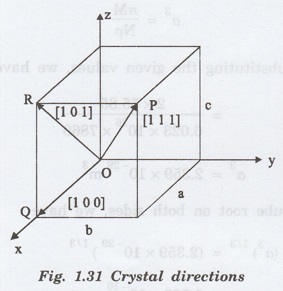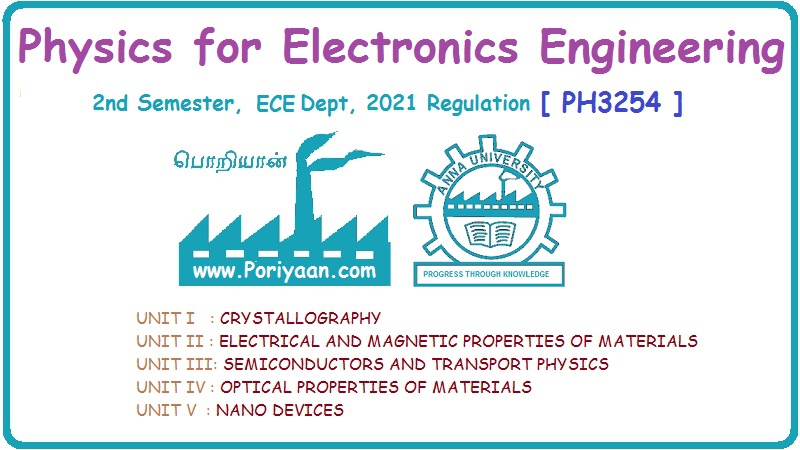Physics for Electronics Engineering: Unit I: Crystallography
Directions in Crystal
It is always useful to have a convention or standardized procedure to specify the directions in a crystal.
DIRECTIONS
IN CRYSTAL
It is always useful to have a convention
or standardized procedure to specify the directions in a crystal. The procedure
of finding the directions inside the crystal is explained below.
1. Consider any lattice point that lies
on the line as origin.
2. Write down the position vector of the
next nearest point on the line in terms of the fundamental translation vector a, b and c of the unit cell of the crystal, say,

3. Now the components of position vector
r along the three directions of a, b, c are r1, r2, r3
respectively. Then the crystal direction is denoted by [r1 r2
r3].
Let us apply this procedure to find the
directions of OP, OQ and OR of an orthorhombic unit cell
(a ≠ b ≠ c; α = β = γ = 90°) in figure
1.31 taking 'O' as origin.

(a)
Direction of OP
Position vector of 
r1 = 1 ; r2 = 1 ;
r3 = 1
Direction of OP is represented by [111]
(b)
Direction of OQ
Position vector of 
r1 = 1; r2 = 0; r3
= 0
Direction of OQ is represented by [100]
(c)
Direction of OR
Position vector of 
r1 = 1 ; r2 = 0 ;
r3 = 1
Direction of OR is represented by [101]
It should be understood that the
directions [222], [333], [444], ....... [n r1 n r2 n r3]
will all coincide with [1 1 1]. In such cases the lowest combination of
integers i.e., [1 1 1] is used to specify the direction. If any of the integers
is negative, for example - 3, it should be read as 3 bar.
Given three integers of a direction, a
family of directions with different possible combinations of them, both
positive and negative, is represented with brackets of the type < >.
Physics for Electronics Engineering: Unit I: Crystallography : Tag: : - Directions in Crystal
Related Topics
Related Subjects
Physics for Electronics Engineering
PH3254 - Physics II - 2nd Semester - ECE Department - 2021 Regulation | 2nd Semester ECE Dept 2021 Regulation
